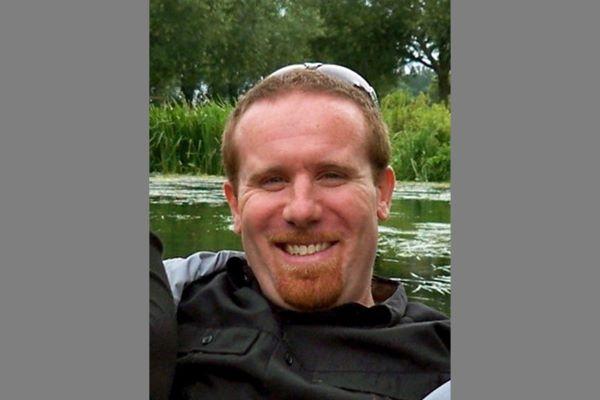College appoints first Arts and Sciences Alumni Professorships made possible by generous estate gift

Buckeyes give: top Arts and Sciences stories from 2022-23
Matt Sullivan runs an Ohio State lab that studies viruses in various environments to understand their ecosystem roles, helping to fight superbugs and other nuisance bacteria. Sullivan joined the Departments of Microbiology and Civil, Environmental and Geodetic Engineering in 2015 after two decades as a researcher for other research institutions. This academic year, he was one of three faculty members named Arts and Sciences Alumni Professorship holders, made possible through an incredibly generous estate gift.
Sullivan’s work is multi-faceted and reflects his passion and energy as a pioneer in his field. Through an early-career Gordon and Betty Moore Foundation Investigator Award, his lab developed much of the modern toolkit that researchers around the world use to “see” viruses in complex systems. This includes both experimental and computational approaches, and the lab provides access to these capabilities through international training workshops, publishing benchmarking and standard operating procedure papers and “live” protocols documentation that are among the most used in the world. The Sullivan Lab has helped elucidate how viruses impact microbiomes in the oceans, soils, extreme environments and humans. Some key results include identification of viruses with photosynthesis genes, the discovery of hundreds of thousands of DNA virus species, global mapping of ocean viruses and recognition of viruses with climate or disease responsiveness.
Having led the development of these foundational resources, Sullivan serves in several leadership roles on the world stage. These include Virus Coordinator for the European Union’s Tara Oceans expeditions, a collaboration with dozens of labs across the world. In a similar role with Ohio State’s EMERGE Biology Integration Institute, Sullivan studies how viruses impact the microbes that thaw and produce climate gases. In addition, Sullivan has published an incredible volume of papers, including some which change the way the world thinks about RNA viruses, and is a Clarivate Highly Cited Researcher, one of the top 0.1% of cited researchers across 21 fields.
While Sullivan acknowledges he has received diverse funding, much of it tends to be for science that “sits squarely in the low-risk category.” For him, this appointment to an Arts and Sciences Alumni Professorship is a “game-changer.”
“The endowment funds let me do two things. First, invest chunks into high-risk, high-reward research directions, and second, create training opportunities for my trainees that I could not otherwise support,” Sullivan said.
What does this mean for his researchers? They gain exposure to top labs through cross-training and meetings, often leading to new thinking and science which comes home to the Sullivan Lab at Ohio State. Opportunities also emerge to collaborate in building out new capabilities in their Microbiome Platform by way of the Center of Microbiome Science.
Additionally, thanks to the Arts and Sciences Alumni Professorship funds, Sullivan was able to bring on two graduate students who are working on their master’s thesis focused on a “holy grail challenge” in microbiome science.
“In brief, genomic technologies empower us to now discover thousands to hundreds of thousands of new viruses and we have worked out ways to use machine learning to classify these new viruses using their genomes. However, figuring out what microbes they infect is a grand challenge,” Sullivan explained.
These graduate students are using molecular biology and sequencing to try to solve the puzzle. By working at large scales and without bacterial cultures, since most microbes in natural environments are not in culture, these “virus hunters” figure out who these viruses infect. This helps them understand what the viruses’ roles in the ecosystem might be. Both of the theses are high-risk, high-reward and involve collaborations with the U.S. Department of Energy Joint Genome Institute, Lawrence Berkeley National Laboratory, and Ohio State’s Director of the RNA Center.
Beyond these projects, another technologically risky project led by a PhD student uses scalable genetics in collaboration with Berkeley Labs to study resistance. This work asks: How do bacterial cells prevent viruses from infecting them? How many ways are there? What are the patterns from one virus to another?
“We are focused on a problematic soil pathogen (Klebsiella) for now, but the approach is easily scaled to many other microbes,” Sullivan said. “Our hope is to use it as a disruptive technology for advancing phage therapy from a 100-year-old idea to a real in-the-clinic therapeutic. This is timely as an alternative to antibiotics, since antibiotic-resistant superbugs are so common and problematic these days.”
Sullivan is in good company with fellow Alumni Professorship holders. Also named this academic year were Hasan Kwame Jeffries, associate professor of history, and Michael Neblo, professor of political science and director of the Institute for Democratic Engagement and Accountability (IDEA).
Jeffries’ work centers the Civil Rights and Black Power Movement. His current book project, In the Shadow of Civil Rights, examines the Black experience in New York City from 1977 to 1993. It aims to provide a new narrative of the Black experience in the post-civil rights era. Neblo’s research focuses on deliberative democracy and political psychology. At IDEA, he oversees the institute’s research, education and public service activities.
All three represent the incredible depth and breadth of faculty excellence and expertise at the College of Arts and Sciences at Ohio State.
Support Arts and Sciences faculty excellence by making a gift to the Arts and Sciences Faculty Excellence Fund.
